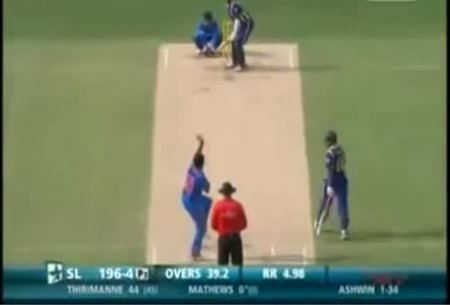
Mankading: Sri Lankans walking a fine line


The above pictures say a thousand words.
There’s been much said and written in the last few days on this subject: some hysterical, some technical, and some very emotional. I do not want to harp too much on the fairness or otherwise of ‘Mankading’ in cricket and repeat ground on what has already been beaten to an emotional death.
So, let us look at the above two pictures critically and without emotion.
The first one shows Sachithra Senanayake running out Jos Buttler in the ongoing Sri Lanka’s tour of England. Here, Buttler’s bat up until the very point of the actual delivery was, in reality, inside the crease. He has clearly assumed that the delivery will be completed, taken his eye off the bowler, and drew the bat closer to his legs just as Senanayake stops to remove the bail. It is a micro-split second between the time his bat slips out of the crease and the removing of the bail.
Is Senanayake justified in stopping at the very last split second of the delivery, pausing to ensure that the non-striker’s bat slips out of the crease and then run him out? This to me appears as setting a scene for a desired outcome. In other words, a set-up. Framed!
Compare this to the next picture: Ravichandran Ashwin’s run out of Lahiru Thirimanne at exactly the same point in the delivery action, in the year 2012. It can be clearly seen that Thirimanne was way out of his crease and practically walking further away. Is Ashwin not within his rights at that point to run him out?
Forget rules, I will come to that in a minute. Which situation do you think called for a justified ‘mankading’?
Anyway, when Ashwin ‘mankaded’ Thirimanne, senior Indian cricketers and captain Virender Sehwag quickly stepped in and saved the situation by magnanimously withdrawing their appeal; eventually, it adversely affected India’s chances in the game.
That did not happen in the case of Senanayake, and the Lankans, despite being the recipient of the magnanimity in an earlier occasion, did not respond to save the situation and show a generosity of spirit. What was staggering was the fact that none of Sri Lanka’s senior cricketers like Kumar Sangakkara or Mahela Jayawardene intervened to drive some sense into the situation.
Is Mankading justified at all, under any circumstance?
Correct me if I am wrong, but I can’t think of any other situation where a fielding side can claim a wicket when the ball is not in play. A ball until the time it has been delivered is a dead ball, i.e., if the bowler does not deliver the ball for any reason after running to the crease, it is called a dead ball. Then how can a dead ball be used to take a wicket?
I understand that, by taking several paces out of the crease, a runner is taking unfair advantage. That doesn’t mean it is up to the bowler to contrive a situation, as, in my opinion, that is what happened with the Senanayake incident, to claim a wicket for his side.
Yes, the ICC rule book clearly gives this right to the bowler, but that does not make it correct or logical. It can be manipulated to a certain extent by the bowler, as I have proven in the above pictures: Senanayake’s case is debatable and, in my view, stretching a fine line in this instance. But ‘mankading’ was fully justified in the case of Ashwin.
A good rule should not allow scope for interpretation to suit different situations and be applicable to devastating effect without justification.
Therefore, I would much prefer that the Mankading rule is re-written in the ICC rule book to give power and responsibility to the umpire and not to the bowler. The straight umpire is the only person capable of determining whether the non-striker is leaving the crease before the delivery action is completed. He should then go through a process of warning the non-striker and ultimately give him out if he transgresses repeatedly.
Case solved. Let’s move forward.
You can find more of Madhu Kshirsagar’s works at isportsview.com